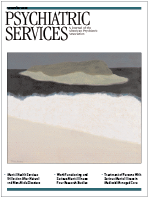Follow-Up of Pentagon Employees Two Years After the Terrorist Attack of September 11, 2001
Abstract
OBJECTIVE: This study examined probable posttraumatic stress disorder (PTSD) and probable depression, degree of psychological distress, and rates of mental health treatment in a sample of Pentagon staff two years after the terrorist attack of September 11, 2001. METHODS: Anonymous surveys were administered to staff at one Pentagon work center. Respondents were asked about exposure to the attack; injuries; exposure to dead bodies or families of the deceased; psychological distress; and use of mental health services. Probable PTSD and depression were assessed with the PCL-17 and the PHQ-9. RESULTS: A total of 267 responses were received. Fourteen percent of the sample had probable PTSD, and 7 percent had probable depression. Staff who were at the Pentagon on the day of the attack were more likely to have probable PTSD and probable depression. Exposure through watching television was not associated with a higher frequency of probable PTSD, probable depression, or distress. Injury during the attack was associated with a higher frequency of probable PTSD, probable depression, and distress. Respondents who were exposed to dead bodies or who acted as lay counselors to families of the deceased were more likely to have probable PTSD and depression and to report chronic distress. Of those with probable PTSD, 70 percent made at least one mental health visit during the next two years. Of those with probable depression, 74 percent reported at least one mental health visit. CONCLUSIONS: Direct exposure to the September 11 terrorist attack on the Pentagon, injury during the attack, and exposure to dead bodies or acting as a lay counselor to families of persons who were killed during the attack were all associated with higher frequencies of probable psychiatric illness and higher levels of psychological distress two years after the attack. Among survivors who had probable psychiatric illness, more than two-thirds received mental health treatment after the attack.



